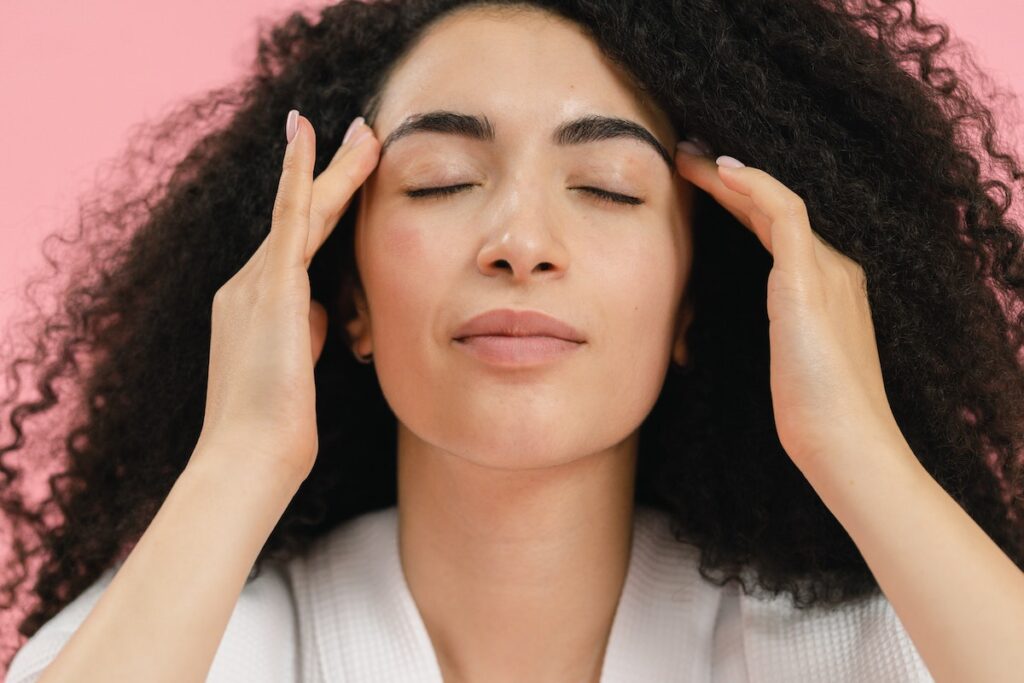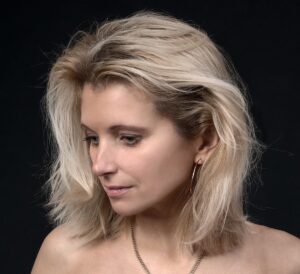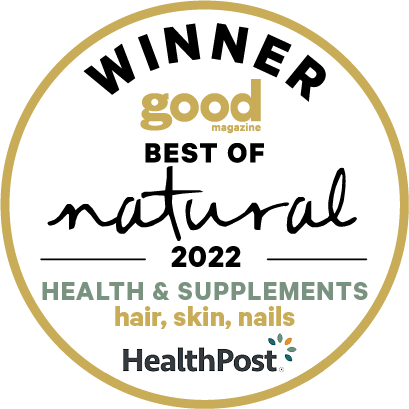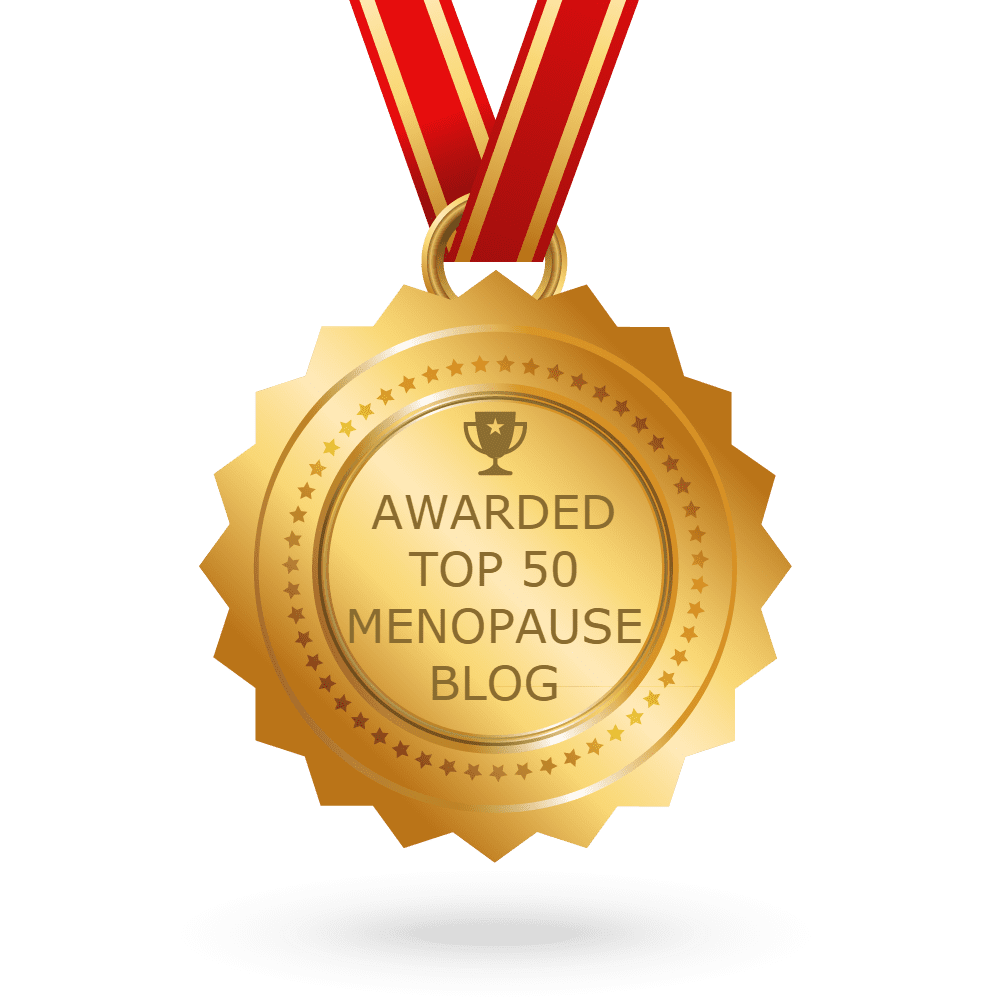Did you know that changes to hair, skin, and nails are among the unexpected signs of perimenopause and postmenopause? It’s not quite what we ordered, right?

Entering perimenopause, menopause, post-menopause and midlife marks a transformative phase in every woman’s life. And let’s be honest – not all changes are welcome (major eye roll).
Along with ‘the change’ (not a popular term, but it fits!) come countless emotional and physical shifts. In fact, there are 34 recognised symptoms of menopause – and counting.
The secret? Understanding and adapting to these changes helps you maintain that vibrant, radiant appearance. And caring about how you look? That’s one of midlife’s biggest lessions.
Don’t miss: Ditching Dye? Meet The ‘We Love Our Grey Hair’ Brigade
Let’s Dive Into Hair, Skin and Nails

When your reproductive hormones – mainly estrogen and progesterone – decline, they directly impact all three.
Indeed, estrogen plays a starring role in hair, skin and nail health. As levels drop, skin becomes drier, nails turn brittle, and hair loss and thinning rear their unwelcome heads. And for many of us, this feels confronting.
Understanding Hormones & Hair Health
Here’s the reality check: around 40% of women experience hair loss or thinning by age 50. Recent Menopause Journal research suggests it’s actually closer to 52%¹.
Many women will experience some form of hair thinning/loss by age 50
This typically appears as a widening at the part line or receding hairline at the temples.
Hair loss during perimenopause and menopause can stem from estrogen and androgen (testosterone and DHEA) imbalances. Normally, these androgens convert to dihydrotestosterone² (DHT), which supports blood flow to the hair follicle.
However, when this system malfunctions, hair follicles shrink and your hair’s natural growth process gets disrupted.
Each hair follicle cycle spans two to five years, and shedding 50-100 strands daily is completely normal.
The Stress Factor
 During perimenopause and menopause, hormonal shifts combine with life stresses – grief, relationship issues, illness, thyroid dysfunction, poor nutrition – creating the perfect storm. Since these often peak during midlife, hair problems become more common.
During perimenopause and menopause, hormonal shifts combine with life stresses – grief, relationship issues, illness, thyroid dysfunction, poor nutrition – creating the perfect storm. Since these often peak during midlife, hair problems become more common.
When stress becomes overwhelming, hair follicles can literally switch off and become inactive.
Most women experience telogen effluvium (the technical term for stress-related hair loss) at some point, but it’s usually temporary. Hormone-driven hair changes can be managed, though genetic hair loss tends to be more permanent.
6 Tips To Manage Thinning, Dry, Brittle Hair
1. Check your brush
Monitor your hairbrush for clues. While collecting hair strands is normal, increased accumulation signals potential hair loss.
2. Fuel with protein, fat & fibre
Prioritise nutrient-dense foods rich in iron, vitamin D and essential fatty acids (EFAs). Choose whole foods over processed options, focusing on quality protein, healthy fats and fibre.
3. Give heat a break
Step back from daily styling and heated tools that damage your hair’s protective outer layer.
4. Hydration is key
Switch to hydrating shampoos and conditioners. Make weekly hair masks your non-negotiable habit (your tresses will love you!)
5. Invest in quality
Choose premium products over budget options, which often contain drying, detergent-based ingredients.
6. Weekly masks are game-changers (read that again)
Grey hair tends to be dryer and frizzier, making weekly hair masks absolute essentials for texture and shine. (Yep, we did repeat this!)
Tip: LotsaLocks® supports hair density at the follicles
How Fluctuating Hormones Affect Your Skin

As mentioned, declining estrogen impacts hair, skin and nails, leading to dryer, thinner skin throughout your entire body – not just your face.
Estrogen regulates thickness, moisture content and blood flow. We call estrogen your ‘juice’ because as it decreases, so do your skin’s natural hydrators like lipids (your oil barrier) and hyaluronic acid.
What’s more transepidermal water loss (TEWL) increases, meaning water evaporates from your skin naturally.
Estrogen also supports collagen and elastin production – the protein fibres responsible for plump, elastic skin. So there’s a lot going on!
Tip: LotsaLocks® triggers the production of collagen IV and VII
Related: How To Have Great Skin After 40

6 Tips To Improve Your skin’s Hydration, Flexibility and radiance
1. Oil up (it’s not what you think!)
Here’s my daily ritual: one dessert spoonful of extra virgin olive oil. Can’t handle it straight? No worries – drizzle 20-30ml over your meals and supplement with omega-3 or evening primrose oil capsules. These powerhouses don’t just transform your skin – they’re great hormone supporters.
2. Moisturise like a pro
Hunt for moisturisers featuring superstar hydrators such as hyaluronic acid and/or glycerine. They should appear in the first few ingredients. You want either humectants (moisture magnets that pull water from the air) or occlusives (protective shields that lock moisture in).
3. Embrace vitamin A magic
Quality vitamin A – whether retinol or retinoid – is mature skin’s best friend. When used properly, it strengthens skin architecture while boosting collagen production and cellular renewal. The catch? Formulation matters hugely, so get professional guidance.
Essential note: During menopause, prioritise natural skincare to dodge xenoestrogens and hormone-disrupting chemicals.
Listen: Exploring The Impact Of Xenoestrogens & EDCs
4. Show your body some love
Your whole body feels it when estrogen drops, not just your face. Enter dry body brushing – your new best friend. Grab a long-handled natural bristle brush, start at your toes and work upward in lfirm strokes. Follow immediately with luxurious oils (fractionated coconut, therapeutic sesame (not the cooking kind) or olive oil), then rinse in the shower and gently pat dry.
5. Eat the rainbow, pile on bitter greens & banish sugar
Think of nutrients as your skin’s construction crew. Rainbow-coloured foods deliver antioxidant firepower for skin resilience. Bitter greens – rocket, kale, watercress – are liver detox champions, and your complexion will thank you.
And here’s the hard truth: refined sugar is your skin’s enemy. It triggers inflammation that literally destroys collagen and elastin, fast-tracking sagging and wrinkles. ‘Nuff said.
Dive deep with our sugar series:
- Sugar, Hormones & Weight Gain
- 10 Ways Your Life Will Improve Without Sugar
- 10 Changes Sugar Can Cause In Your Body.
6. Make facials non-negotiable
Yes, we’re prescribing facials – probably your favourite homework assignment!
But seriously, beyond being pure bliss, facials are self-care during hormonal transitions. The massage component alone boosts circulation and stimulates collagen synthesis.
Golden rules: stick to gentle formulations, maintain hydration levels, and resist those scorching hot baths and showers. Heat strips away your skin’s previous natural protective oils.
Always bear in mind that you want to nurture your skin barrier.
How Hormones Sabotage Nail Strength & Growth
When estrogen crashes, your nails suffer the same fate as hair and skin – becoming fragile, parched and brittle.

Estrogen decline weakens the keratin layer that gives nails their strength and hardness. Combined with your body’s reduced water retention, nail plates become compromised. The result? Nails that split, peel, break and grow frustratingly slowly.
6 Strategies For Strengthening Weak, Brittle Nails
1. Become hand protective
Your hands are workhorses, constantly battling harsh detergents and chemicals. Armour up with quality gloves for all household tasks.
2. Feed your nails from within
Choose whole, unprocessed foods rich in lean proteins, beneficial fats andomega-3s. Your nails are built from the inside out.
3. Hydrate strategically
Since estrogen normally regulates your body’s water balance, you need to work harder now. It’s smart to keep water visible and accessible, while loading up on water-rich foods like cucumber and lettuce. Dehydrated nails are brittle nails.
4. Master the olive oil treatment
This grandmother-approved method delivers results: warm olive oil soaks for 10 minutes weekly. Your nails will drink up the conditioning benefits.
5. Create a hand cream habit
Frequent applications are key – your hands face constant challenges through the day. Think of hand cream as armour, not luxury (the no-nasty-ingredients kind, of course!)
6. Indulge in nail spa treatments
Another guilt-free pleasure! Professional manicures include circulation-boosting hand massage that stimulates both blood flow and collagen production.
Tip: LotsaLocks® accelerate nail growth and strength
Related: 9 Ways To Deal With Soft & Brittle Nails
When To Seek Professional Help
Consider consulting a trichologist or dermatologist to eliminate underlying conditions causing your hair, skin and nail concerns.
Nutrient deficiencies – particularly iron or folate – often contribute to these issues. Thyroid dysfunction is another common culprit during midlife.
Ensure you ask for comprehensive thyroid testing beyond TSH levels. Request free T3, free T4, reverse T3 and thyroid antibodies for a fuller picture. TSH can appear normal while your thyroid struggles.
The Bottom Line:

Perimenopause, menopause and post-menopause can dramatically impact hair, skin, and nails, but targeted strategies help you navigate these changes with confidence and grace.
What’s your secret weapon for maintaining gorgeous hair, skin and nails during hormonal transitions.
Ours – hand on heart – is our own LotsaLocks®
Listen: Have You Got A Beauty Issue?
Related: 9 Ways To Deal With Soft & Brittle Nails
Disclaimer: This information is for educational purposes and shouldn’t replace professional medical advice. Always consult with your healthcare provider before making significant health changes. We know our stuff, but we’re not your doctor.
And just so you know: this article is written by a real person who has studied the physiology of menopause and women’s healthy ageing. While we may use AI as an assistant, the research, insights and heart behind every piece comes from us.
References:
- Menopause Journal research on hair loss prevalence
- Dihydrotestosterone (DHT) and hair follicle health










